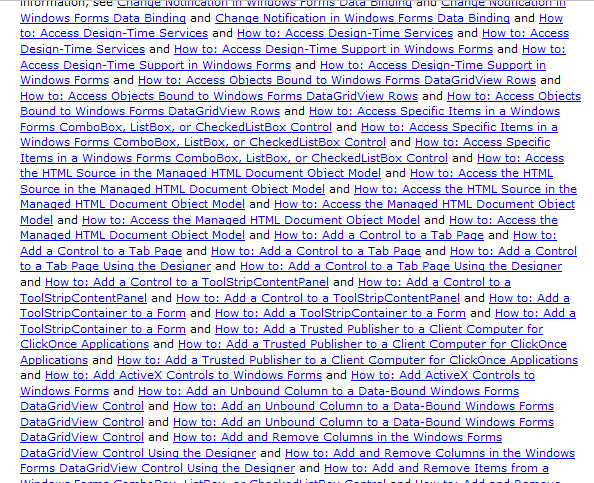Warning: WP_Syntax::substituteToken(): Argument #1 ($match) must be passed by reference, value given in /customers/9/2/f/appelgren.org/httpd.www/blog/wp-content/plugins/wp-syntax/wp-syntax.php on line 383
Warning: WP_Syntax::substituteToken(): Argument #1 ($match) must be passed by reference, value given in /customers/9/2/f/appelgren.org/httpd.www/blog/wp-content/plugins/wp-syntax/wp-syntax.php on line 383
Warning: WP_Syntax::substituteToken(): Argument #1 ($match) must be passed by reference, value given in /customers/9/2/f/appelgren.org/httpd.www/blog/wp-content/plugins/wp-syntax/wp-syntax.php on line 383
Hopefully I’m not the only one having trouble with aggregates, Linq to SQL and empty results. The query I had was something like the following.
var result = (from v in db.Table select v.IntColumn).Max(); |
var result = (from v in db.Table select v.IntColumn).Max();
This fails with an exception if Table is empty.
The null value cannot be assigned to a member with type
System.Int32 which is a non-nullable value type.
So after some reading on MSDN I found the extension method Queryable.DefaultIfEmpty, it returns a collection with one element that has the default value of the type of the IQueryable<T> if the IQueryable<T> is empty, that looked like it could solve my problem. But I quickly found out that it is not supported by Linq to SQL.
Could not format node 'OptionalValue' for execution as SQL.
So then after reading a blog post about this I ended up with the following query that does what I want.
var result = (from v in db.Table select (int?)v.IntColumn).Max()
?? 0; |
var result = (from v in db.Table select (int?)v.IntColumn).Max()
?? 0;
It has the side effect that the generated SQL query contains an extra nested select but I think that is acceptable.
SELECT MAX([t1].[value]) AS [value]
FROM (
SELECT [t0].[IntValue] AS [value]
FROM [Table] AS [t0]
) AS [t1] |
SELECT MAX([t1].[value]) AS [value]
FROM (
SELECT [t0].[IntValue] AS [value]
FROM [Table] AS [t0]
) AS [t1]

